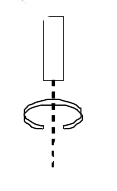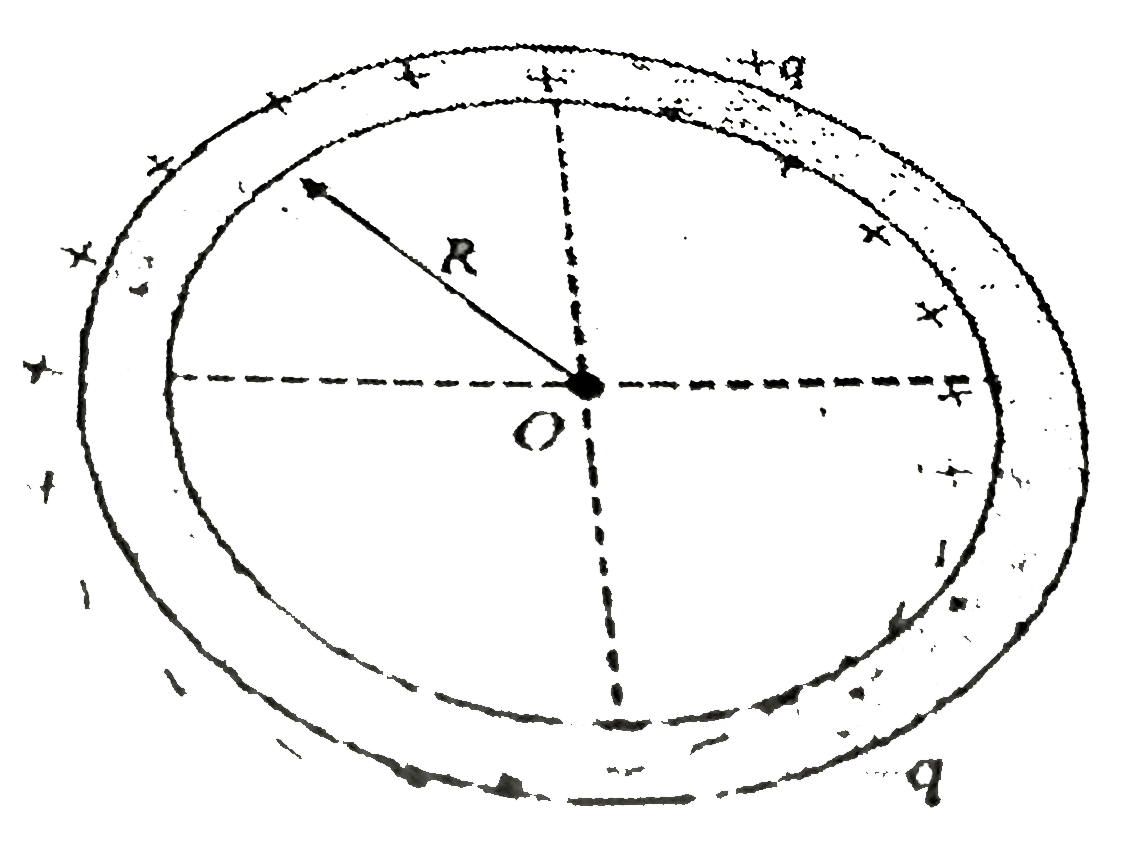There are two parallel rings R1 and R2 placed co-axially and a bar magnet whose length is kept along the axis of rings is moved as shown in figure.
Rings will attract each other
Rings will repel each other
Current in both rings flows in the same direction
Current in both the rings flows in opposite directions
The correct Answer is:B, D
South pole of the magnet is moving away from the R1 and hence equivalent north pole develops to attract the receding south pole of magnet. Hence anticlockwise current appears in R1 when looked from the side of the magnet. Similarly, north pole of the magnet is approaching R2, hence north pole develops in R2 to repel approaching magnet. Hence in ring R2 anticlockwise current appears when looked from the side of the magnet. Anticlockwise current appears in both when we look at the rings from opposite directions and hence current flowing in the rings are along opposite directions. Hence, option (d) is correct. Equivalent north pole faces of rings are facing each other and hence both will repel each other. Hence, option (b) is correct. Options (b) and (d) are correct.
Topper's Solved these Questions
- ELECTROMAGNETIC INDUCTIONBOOK - MODERN PUBLICATIONCHAPTER - ELECTROMAGNETIC INDUCTIONEXERCISE - COMPETITION FILE (MULTIPLE CHOICE QUESTIONS BASED ON GIVEN PASSAGE)
7 Videos
- ELECTROMAGNETIC INDUCTIONBOOK - MODERN PUBLICATIONCHAPTER - ELECTROMAGNETIC INDUCTIONEXERCISE - COMPETITION FILE (ASSERTION REASON TYPE QUESTIONS)
10 Videos
- ELECTROMAGNETIC INDUCTIONBOOK - MODERN PUBLICATIONCHAPTER - ELECTROMAGNETIC INDUCTIONEXERCISE - COMPETITION FILE (MULTIPLE CHOICE QUESTIONS) (AIPMT/NEET & Other State Boards for Medical Entrance)
8 Videos
- ELECTRIC CHARGES AND FIELDS BOOK - MODERN PUBLICATIONCHAPTER - ELECTRIC CHARGES AND FIELDS EXERCISE - Chapter Practice Test
15 Videos
- ELECTROMAGNETIC WAVESBOOK - MODERN PUBLICATIONCHAPTER - ELECTROMAGNETIC WAVESEXERCISE - CHAPTER PRACTICE TEST
14 Videos
Similar Questions
Knowledge Check
A metal ring is held horizontally and bar magnet is dropped through the ring with its length along the axis of the ring. The acceleration of the falling magnet
Aequal to gBless than gCmore than gDdepends on the diameter of the ring and length of magnetA copper ring is held horizontally and a bar magnet dropped through the ring with its length along the axis of the ring. The acceleration of the falling magnet while it is passing through the ring is
Aequal to that due to gravityBless than that due to gravityCmore than that due to gravityDdepends on the diameter of the ring and the length of the magnetA copper ring is held horizontally and a bar magnet is dropped through the ring with its length along the axis of the ring. The acceleration of the falling magnet, while it is passing through the ring is
AgBless than g.Cgreater than g.Ddepends on the diameter of the ring and the length of magnet.
A copper ring is held horizontally and a bar magnet is dropped through the ring with its length along the axis of the ring. Will the acceleration of the falling magnet be equal to, greater than or less than that due to gravity?
View SolutionA copper ring is held horizontally and a bar magnet is dropped through the ring with its length along the axis of the ring. The acceleration of the falling magnet while it is passing through the ring is

View SolutionA copper ring having a cut such as not to form a complete loop is held horizontally and a bar magnet is dropped through the ring with its length along the axis of the ring . The acceleration of the falling magnet is __ (neglect air friction)__

View SolutionA copper ring having a cut such as not to from a complete loop is held horizontally and a bar magnet is dropped through the ring with its length along the axis of the ring. The acceleration of the falling magnet is
View SolutionA conducting ring R is placed on the axis of a bar magnet M. The plane of R is perpendicular to this axis, M can move along this axis.

View Solution

